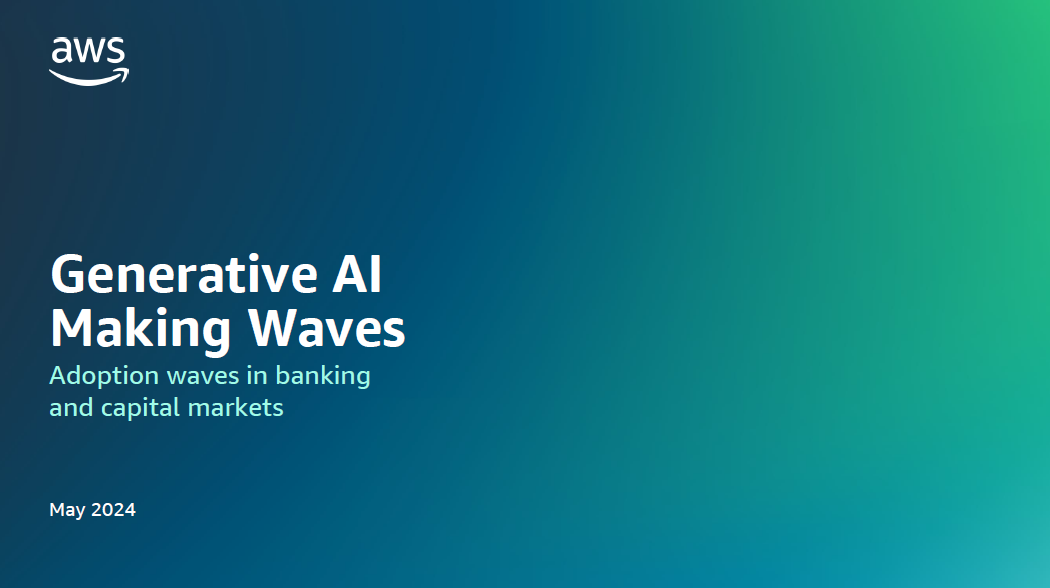Waves of Ai Adoption in banking and capital markets
According to the May 24 Celent ‘Generating AI Making Waves: Adoption waves in banking and capital markets (Alenka Grealish and Patrick Wegner) commissioned by Amazon Web Services (AWS) the financial services industry has been at the forefront of adopting generative artificial intelligence (AI) which could create an additional $200 billion to $340 billion in value annually in the banking industry alone according to McKinsey*.
*Mckinsey & Company, The Economic Potential of Generative AI: The Next Productivity Frontier, 2024
The report highlights how generative AI is making a significant impact on both the employee and customer experience, with efficiency gains where institutions manage large volumes of data and documents.
The gains are in reducing routine, repetitive work for professionals and freeing time for creativity and innovation according to the report.
As examples of progress the report highlights activities of organisations like Bridgewater Associates with its LLM investments and the NatWest Group working on personalised product messaging resulting in 900 percent growth in applications for its high interest rate accounts.
Against this backdrop and daily changes in this fast-moving arena Celent’s report defines three distinct generative AI adoption waves in banking and capital markets and identifies strategies for navigating each.
Looked at from the perspective of three waves of time spanning now to 2034 the report examines common use cases in employee and customer facing application.
One of the takeaways is that the next three years will be dominated in terms of adoption by pragmatic use cases.
Use cases that offer high productivity/efficiency gains in low-risk areas.
As we are seeing with a wide variety of new Ai tools and major players releasing more and more capability seemingly weekly, the area of code development including debugging and testing appears front and centre.
The issue in the next few years is risk.
Employee facing areas offer less risk so ideas may evolve here. Areas including analysis and training for staff may also be targets in this phase along with content generation and basic simple service interactions.
The early days are also governed by wanting to take out inefficient manual and paper-based processes, conduct experiments with low risks and navigate an evolving regulatory framework whilst the technology itself including the underlying GPU infrastructure is itself evolving rapidly.
It is not until later it is predicted that customers and customer service and personalised service in customer facing interactions will appear. This is potentially due to risk and risk of the wrong information being given and of hallucinations featuring in a customer response. It is predicted that this wave will take off as hallucinations and associated risks diminish around 2028.
Whatever transpires it is evident that the ‘genie’ is out of the bottle and wave upon wave of adoption and improvement are coming.
What is unclear is the actual pace and depth of adoption achieved but based on progress so far and in terms of capability and impact compared to previous waves of change this is fast and deep by anyone’s standards.
The years will fly past and adopting AI and experimenting now with change is a corporate imperative to stay with the surge.
If you would like us to help you with your digital journey then please contact us here...
